One of my favorite places in Los Angeles, and possibly the entire world, is the Baldwin Hills Scenic Overlook. It is the platonic ideal of a landscape architecture project— a former oil field, now a California State Park, full of native plants, heavily-used by the nearby environmentally-burdened communities, and beside the largest urban oil field in the nation. Walking up the Overlook is the only thing I wanted to do at the end of the most difficult week of my life, and what I routinely do to get away from screens and remind myself of the possibilities the city holds.
There are several ways of getting up to the Overlook, and I choose differently based on what my intentions are that day. The dirt switchback trail is for when I am seeking inspiration and want to enjoy looking at native plants. During the past few rainy winters, the trail has suffered a lot of damage, which sometimes leads to it being closed and sometimes just means more exciting, off-roading-like experiences. The trail is heavily used, and a lot of professional and volunteer maintenance goes in to keeping it safe. This route is the best one for feeling immersed in nature, which is most colorful in the spring. You can see a variety of buckwheat, goldenrod, sages, toyon, and my favorite, bush sunflower. However, like the neighboring Santa Monica Mountains, the Overlook has issues with invasive black mustard, a plant likely brought by Spanish colonizers. Besides causing mudslides, a wet winter means the mustard can get nearly ten feet tall. It becomes almost frightening, and makes me feel like a tiny cartoon character. The Overlook staff are quite diligent about managing what they can, and most of it is removed by summer. But it will always return next year.
The next method of reaching the top is perhaps what the Overlook is most famous for— the 282 large and irregular urbanite1 stairs that ascend up the mountain at an intimidating angle. I use the steps if I am feeling up for a challenge or came here with the purpose of working out. At the end of any weekday, or all day on the weekends, you can find hundreds of people from all walks of life going up and down the steps repeatedly, and the entire hill feels like a vertical shrine to modern fitness. I routinely get dusted on the way up by middle aged women running in weighted vests and teenage boys wearing Adidas slides. To me, the steps are the true work of landscape architecture genius at the Overlook— a low-tech, lower maintenance, and entirely recycled solution to provide visitors with an extremely useful service. A gym at the heart of the mountain.
The final way of reaching the top of the Overlook is by the paved road. There is a sidewalk beside the road for about half of the way up, and I take this route if I am in a rush or feeling kind of lazy. At the peak, there is a small nature center, pavilion, and a few different paved areas to rest. San Diego-based architects Safdie Rabines designed the structures and WRT did the landscape, and you can even have weddings at the top. The nature center, run by State Parks, keeps extremely mysterious hours. I have only been inside once. These facilities seem devastatingly underused, especially compared to how overused the trails are.
At the top, you get almost a 360 degree— maybe 300 degree— view of the whole city. The Hollywood sign shines, and the sometimes snow-capped San Gabriel Mountains reflect behind the high rises of downtown. Right after a rainstorm last spring, I could see all the way to Whittier/Montebello— the site of another under-discussed refuge of urban nature adjacent to an oil field. Once I was at the Overlook while it hailed. More than once I’ve watched rainbows span across the entire city from the lookout point. Red-tailed hawks abound around the hill, and I love watching them from nearly their altitude, feeling like you could just take off into the sky with them. I even find it awe-inspiring to watch LAPD helicopters fly by from the Overlook, almost existing on the same plane as you for a moment.
A few weeks ago, while the Palisades and Eaton fires were still burning, I went up to the Overlook at sunset. This was the only time I have ever driven there, as we were advised to limit our time in the fresh air. A fairly large crowd had gathered on the southwest corner, watching the smoke from the Palisades fire trail over west Los Angeles. Some people were in masks protecting themselves from the very visible smoke, most were not. Some were not looking at the smoke cloud at all, instead sitting on the benches facing south, towards the ocean, but also towards the view of the Inglewood Oil Field, the nation’s largest urban oil field, spanning one thousand acres— larger than Central Park.
The land the Overlook now occupies was once an oil field as well, but was decommissioned sooner for reasons that I cannot find on the internet. Neighbors and the Baldwin Hills Conservancy fought against a plan to develop the site, and it was eventually purchased by the state and opened as a park in the late 2000s. It has since been connected to Park to Playa Trail, a hiking and bike trail running from the nearby Kenneth Hahn State Recreation Area and the Ballona Creek bike path.
The Inglewood Oil Field is set to be decommissioned by 2030, about 100 years after it opened, and the debate about what it should become is just beginning. Early landscape architects Olmsted and Bartholomew didn’t even dream of re-imagining the oil field’s operations in their 1930 plan for parkways and parks in the county. The idea of a one thousand acre park entering an existing connected parks system between west and south Los Angeles is ground-shifting. The idea of a world without oil remains even more so. Until then, we will have to visit the Baldwin Hills Scenic Overlook to be reminded of the possibilities.
Thanks for reading. I’ll see you somewhere next week.
Architect’s term for recycled concrete, named because something like scientists in the future might call concrete ‘urbanite’ as if it is a naturally occurring substance


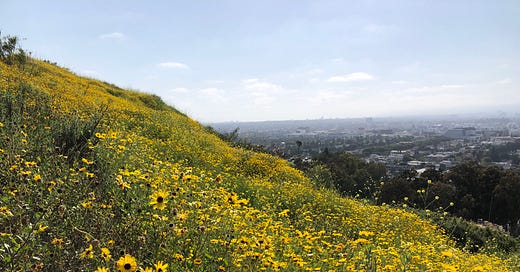



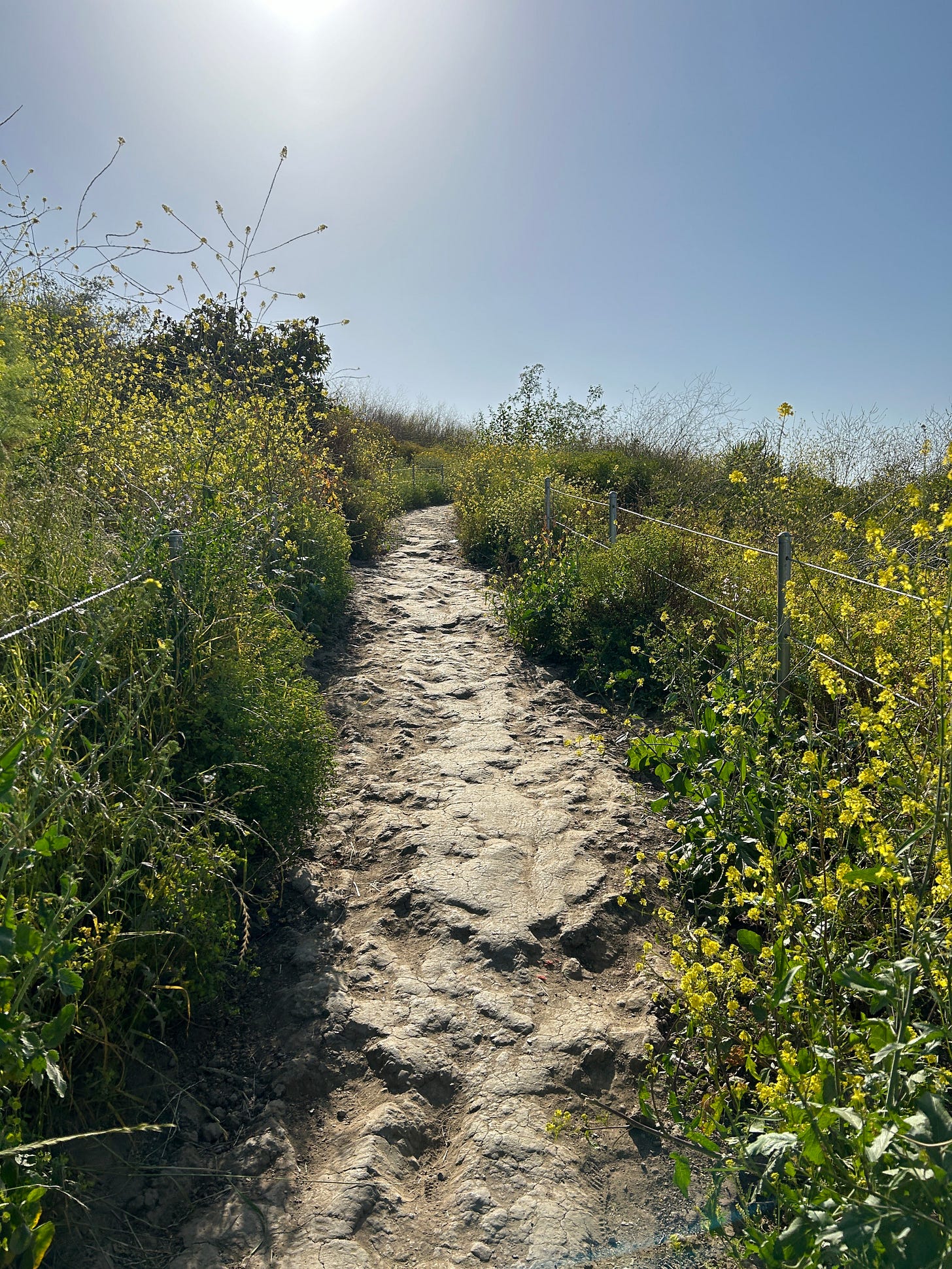
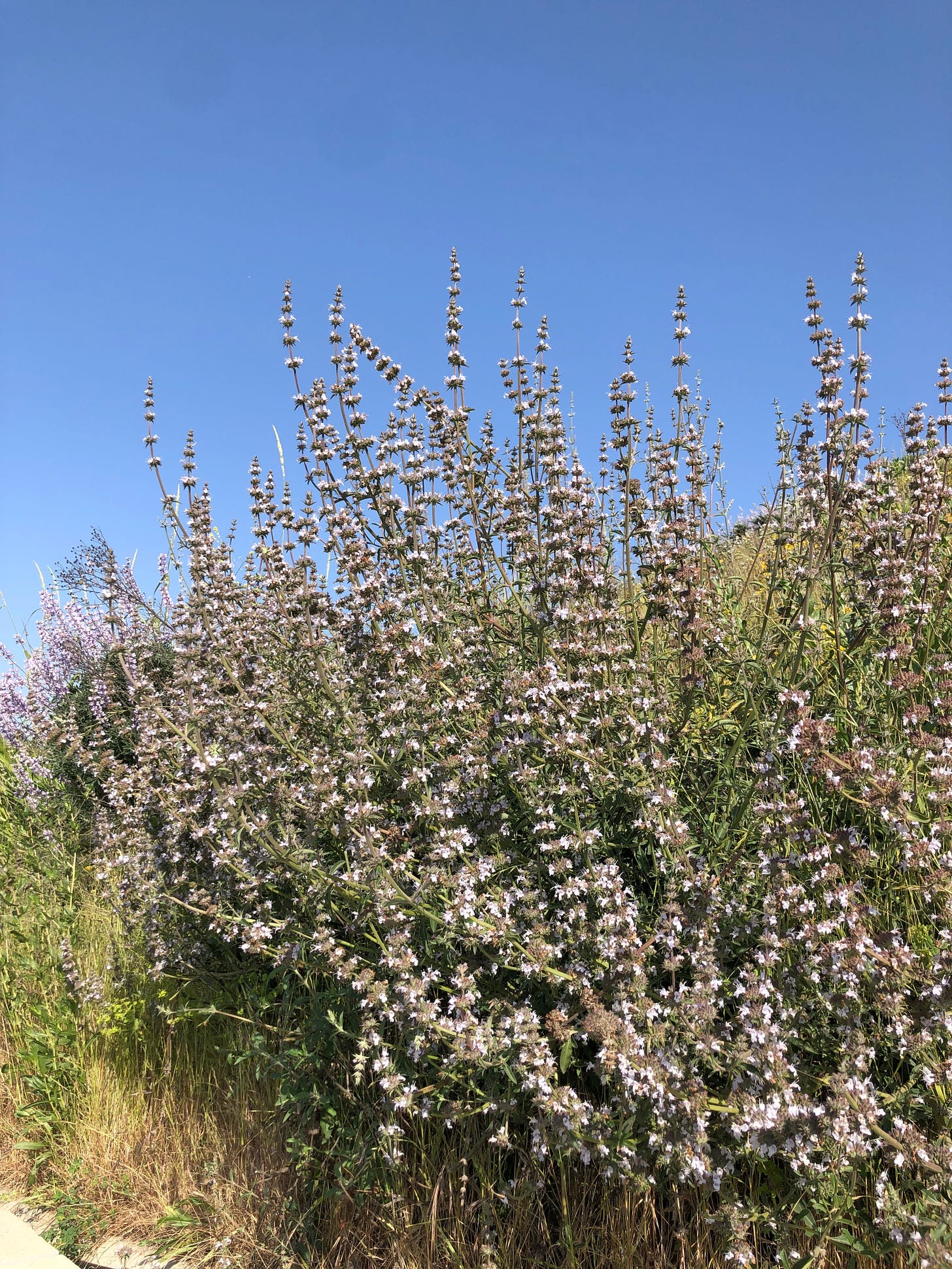

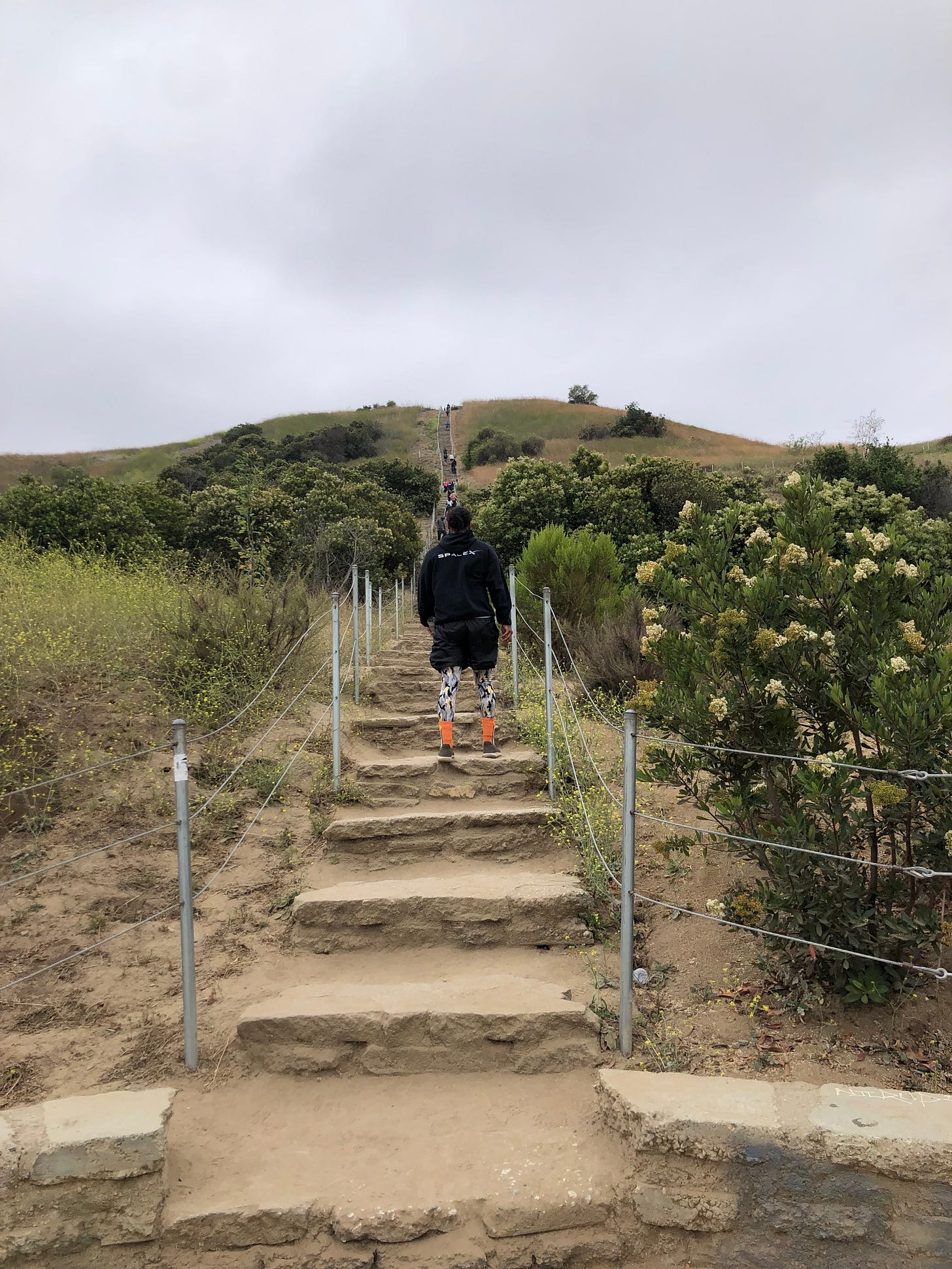
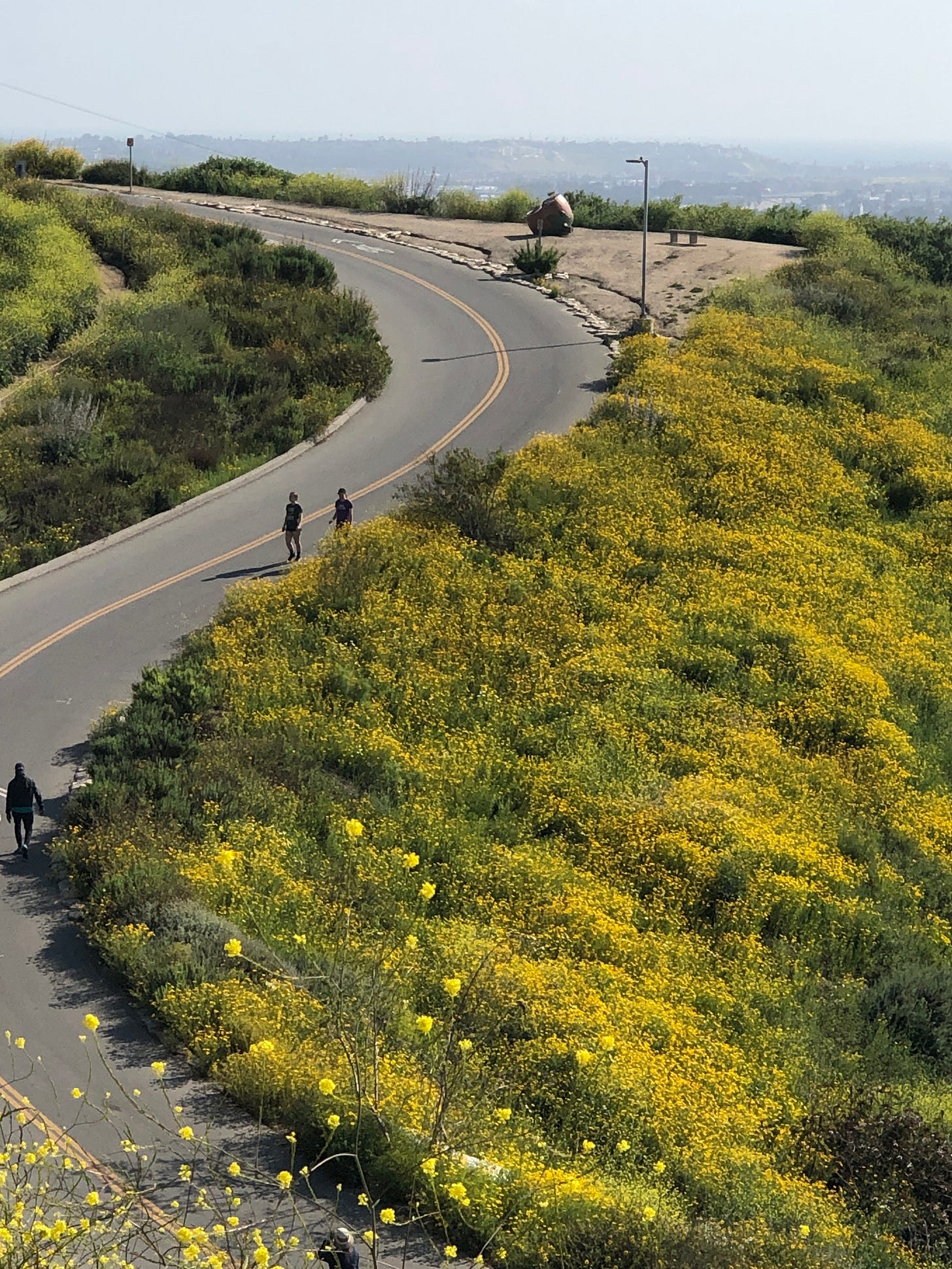
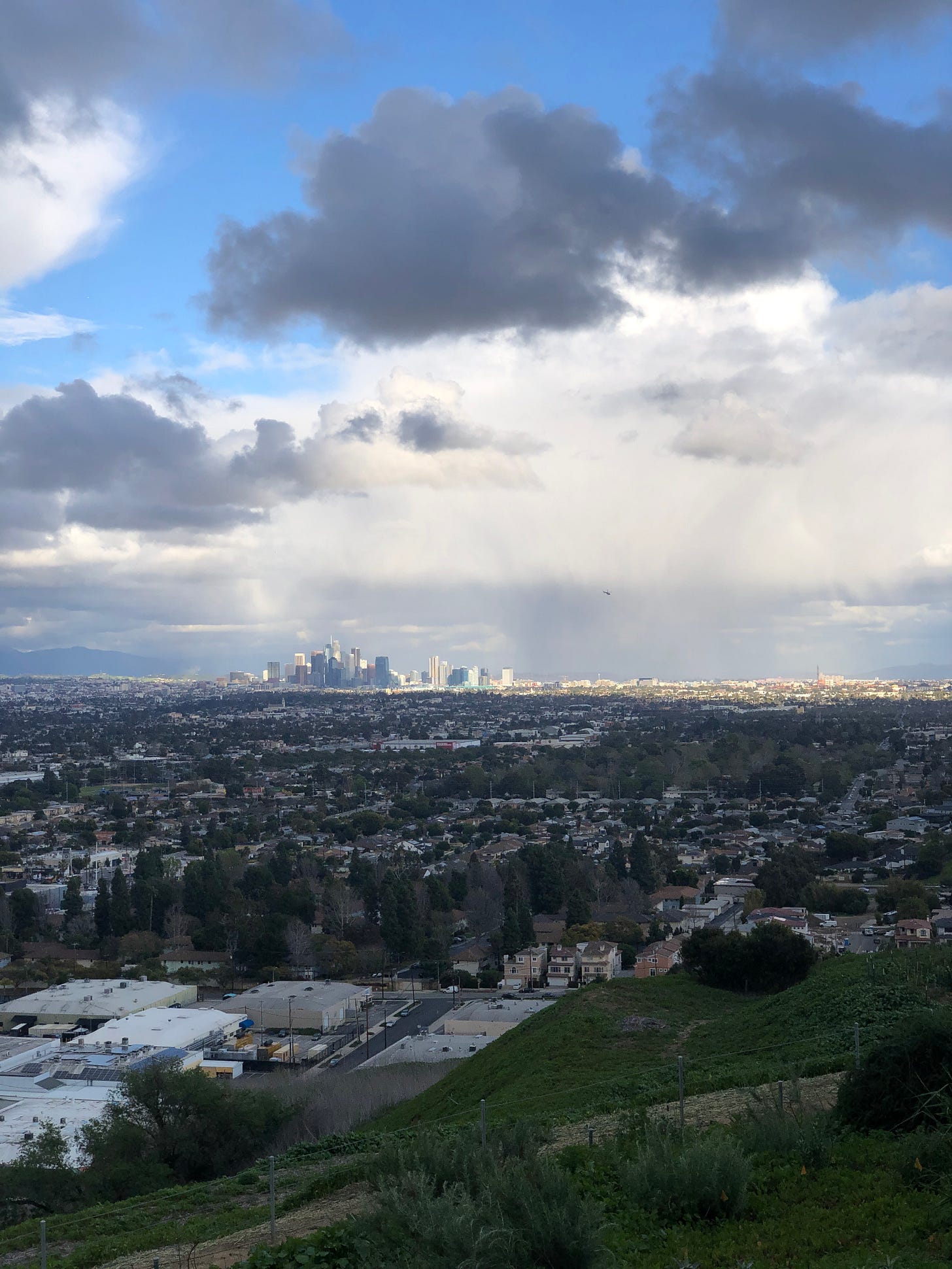
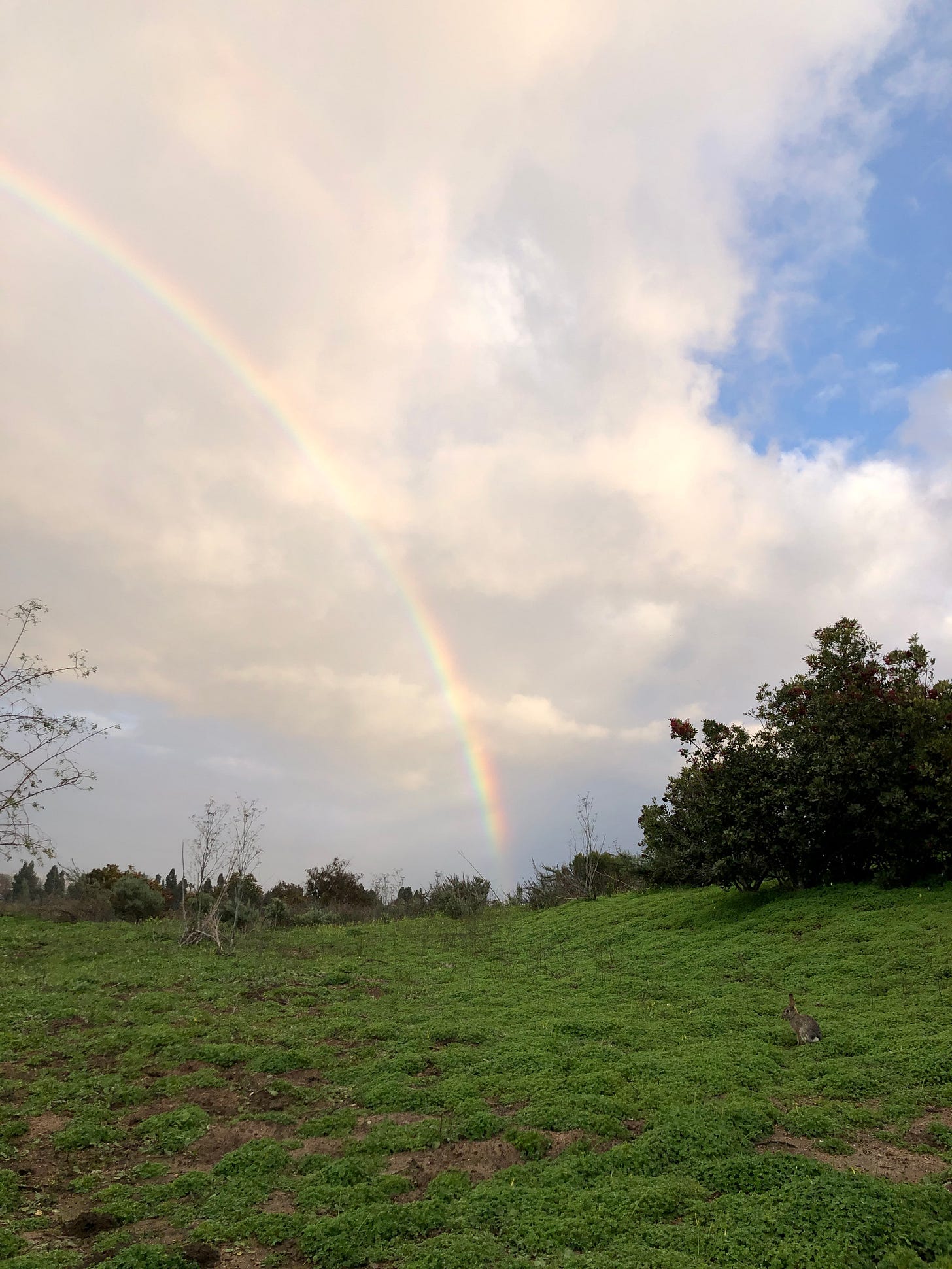
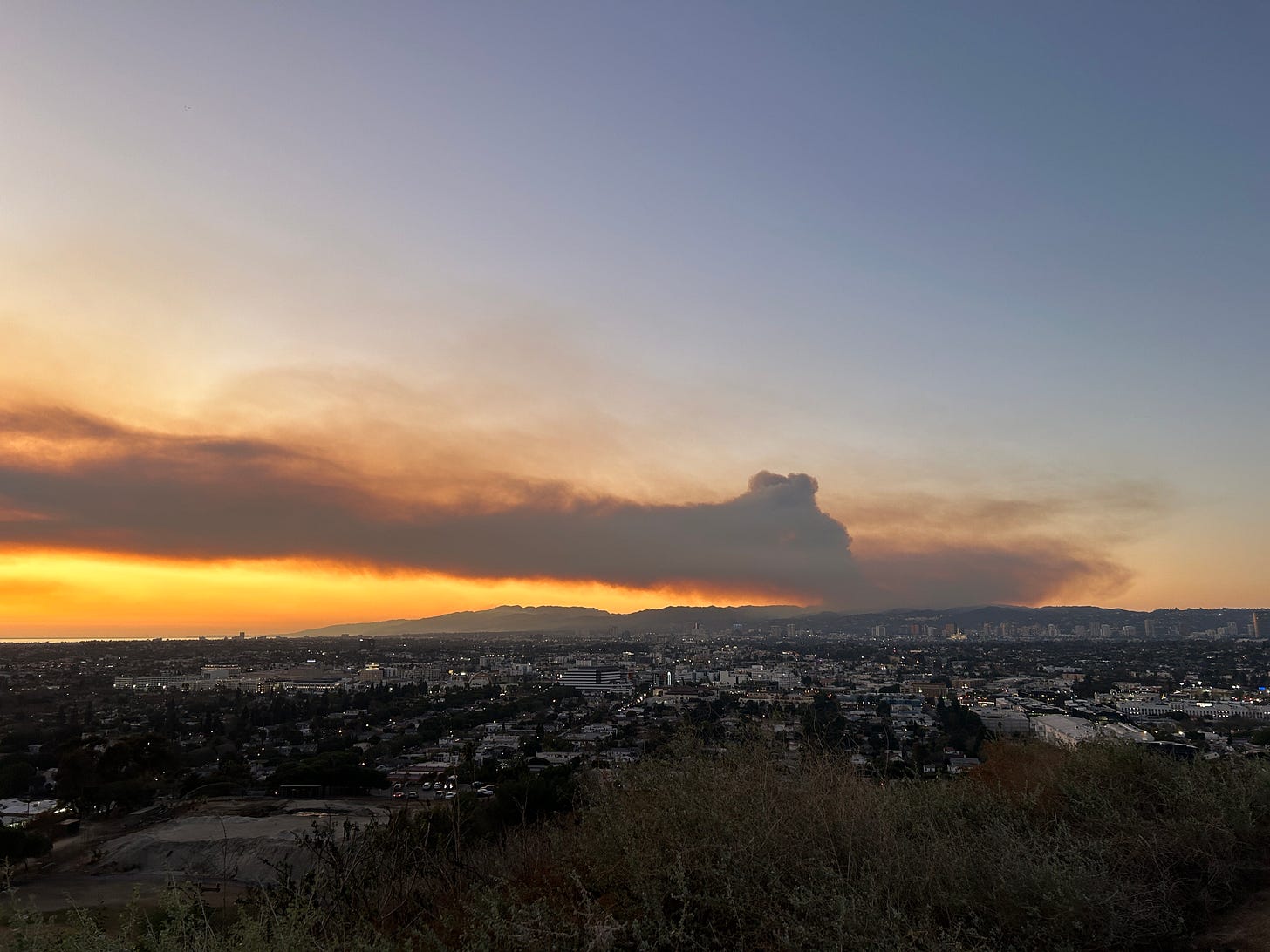

Beautifully written! Thanks for putting into words the way I feel about my favorite slice of home :)